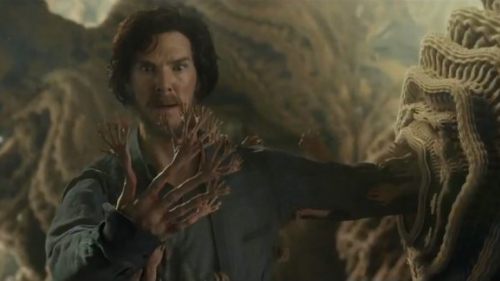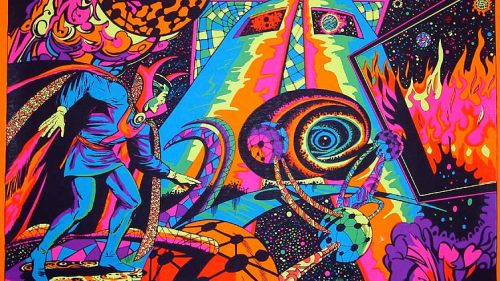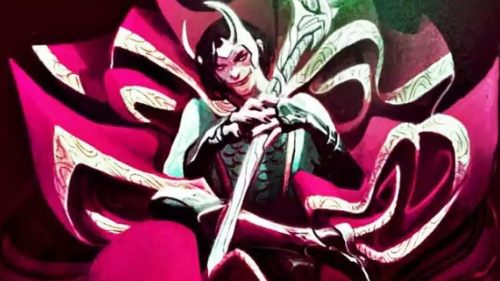Strange Detours: THE OATH, THE DOCTOR IS OUT! and FEVER
We are celebrating this week's Doctor Strange release (get your tickets here!) with a bunch of articles all dedicated to Marvel's Sorcerer Supreme.
The Marvel B-list is a strange place for a superhero. Casual readers and non-comics fans probably know their name – they aren’t the ill-fated Spider-Woman III (Mattie Franklin) or Guardian/Weapon Omega/That Canadian Guy who Accidentally Murdered a Bunch of Mutants. But they aren’t Captain America or Wolverine either. They may have been part of a well-regarded run on X-Men or Avengers, and they probably have at least one story that’s beloved by superhero fans. But an entire series of their own? That’s another matter entirely. If the fan community, the right creative team and the market line up right, it can work – take David Aja, Ed Brubaker and Matt Fraction’s Immortal Iron Fist or Aja, Annie Wu and Fraction’s Hawkeye as examples of just that. But if those factors don’t line up, the character may continue through the Marvel universe without a continuing series of their own. And for 28 years, that was the case for Doctor Strange. He was always a prominent part of the Marvel universe – perhaps the best known of its non-Asgardian magical heroes – but he was never quite popular enough to make an ongoing book a worthwhile investment after the second volume of Doctor Strange ended at 81 issues in 1987. (Edited to add: the last ongoing series prior to last year was called Doctor Strange: Sorcerer Supreme and it ran 90 issues from 1988 to 1996.)
That changed last year, when artist Chris Bachalo and writer Jason Aaron launched a new Doctor Strange ongoing with a boost from the upcoming $165 million Scott Derrickson MCU feature. Prior to the raised profile that comes with being the subject of a major fall blockbuster, the Sorcerer Supreme’s solo adventures took place in a succession of original graphic novels and miniseries. These shortform tales allowed their creators to dive into Stephen Strange’s character in a context outside of the Marvel universe’s big ongoing stories, and to fully embrace the psychedelia and deep weirdness that has been a key part of Strange’s visual palate since he was created by Steve Ditko and Stan Lee. For this piece, I’ve chosen to shine a spotlight upon three of those miniseries. They’re all very good comics, and while I would recommend all of them, I want to take a quick look at what specifically works and does not work in each. So, without further ado, don your Cloak of Levitation and follow me through Driddil’s Doorway into these tales of the Sorcerer Supreme’s adventures beyond the Avengers and the Defenders.

DOCTOR STRANGE: THE OATH (2007)
Art by Marcos Martin
Story by Brian K. Vaughan
What’s the story?
Wong, Doctor Strange’s servant/best friend, has been diagnosed with an inoperable brain tumor. Strange, driven by both his friendship with Wong and his commitment to the Hippocratic Oath, vows to find a cure. His research on mystical curatives leads him to an elixir guarded by an ancient evil god named Otkid the Omnipotent. Strange being Strange, he takes on the god, comes out on top and claims the elixir. He doesn’t just dose his best friend with a magical potion he got from dimension π; he runs tests and commissions labwork to make sure that the elixir lines up with his research. It doesn’t. It isn’t a cure for a cancer. It’s a cure for all cancer. Before Strange can dive further into the elixir’s mysteries, a burglar named the Brigand breaks into the Sanctum Sanctorum, shoots Strange with Hitler’s enchanted handgun and steals it. Wong, struggling with his tumor, takes his badly wounded friend to the Night Nurse, the superhero community’s underground doctor. And that’s where The Oath kicks into high gear.
What works?
Of the three miniseries I’m covering here, The Oath is the most down to earth. Marcos Martin’s pencils are clean, simple and elegant. Doctor Strange lives and works with the impossible, but as fantastic as his life often is, it is also his regular status quo. Martin renders Strange’s world striking without being needlessly flashy. It’s a good balance for a story that pits Strange against everything from giant beasts that have slain previous Sorcerers Supreme to a bitter ex-colleague from his days as a brilliant but jaw-droppingly arrogant surgeon.
As strong as its art is, it is The Oath’s writing that makes it such a fine comic. Brian K. Vaughn’s reputation rests primarily on his very fine creator-owned work – Y: The Last Man and Ex Machina in the 2000s, Saga and Paper Girls in the 2010s and on his early 2000s Marvel book Runaways. The Oath adheres much more strictly to the superhero storytelling formula than Runaways or Ex Machina, and its ambitions are smaller than Saga and Paper Girls. But that is not a problem – the tighter focus and strict formula allow Vaughn to dive deeply into the intricacies of Strange’s character, and to give him a conflict with stakes both personal and massive. Vaughn’s Strange has moved past the arrogance and cynicism that defined him as a younger man, but he has not shed them. He knows how good he is, and how hard he has worked to be that good both in skill and in character. He has no tolerance for the casually cruel or the self-deluded, especially if they try to claim some sort of moral mandate. Above all else, he is committed to the Hippocratic Oath, a commitment that is pushed to its very limit by the events of The Oath via a classic superheroic dilemma. It’s a great piece of character work from Vaughn, a statement on the defining part of Stephen Strange’s identity as both a person and a hero. Plus, from what I’ve read about Derrickson’s Doctor Strange, a few of The Oath’s story beats were the inspiration for some of the movie’s. If you’re at all interested in how a blockbuster based on decades’ worth of stories comes together, the texts it draws from are a good place to start exploring.
What doesn’t?
The Oath’s pacing can get a bit bumpy in places, since its primary events only take place over a few very, very packed days. Key flashbacks simultaneously disrupt the narrative and provide context for it, which renders the read frustratingly start/stop in a few places. On a more metatextual level, The Oath is the only one of the three series to feature Wong, whose character started as a racist stereotype: the submissive Asian manservant. While Vaughn writes the relationship between Strange and Wong as a long friendship between peers, the racist history remains. Making Wong and Strange friends in addition to a formal master/servant relationship is at best a band-aid for what is still a major problem in comics and US culture at large. It’s an issue within The Oath, and with the context in which it exists – keep that in mind.

STRANGE: THE DOCTOR IS OUT! (2010)
Art by Emma Rios
Story by Mark Waid
What’s the story?
Stephen Strange is the Sorcerer Supreme no more. Due to assorted incidents in the greater Marvel universe, Strange has been stripped of his title and much of his mystical power. Nevertheless, he continues to do good where he can and as he can. While attending a baseball game where a demon seeks to claim the souls of the home team for a deal the stadium’s previous team made, Strange meets a lonely, disenchanted young woman named Casey who turns out to be a magical prodigy. The pair join forces to win the demonic baseball game, only for Strange to depart back to New York once things are settled. Undeterred, Casey tracks him down. The pair soon find themselves drawn into battle with a sleazy, amoral demon who has tricked a group of stage moms into selling him their daughters’ souls, and whose callousness could have disastrous consequences for the universe as a whole.
What works?
Of the three miniseries covered here, Strange is my personal favorite, and much of that is due to the outstanding work of Emma Rios. Rios is a great cartoonist – her characters have realistic proportions, but maintain wonderfully expressive faces and body language. For my money, where Rios really excels is in how she depicts motion. She captures the moments in between. They’re little things, as simple as Strange’s jersey blowing in the wind when he steps up to bat, or an exhausted, drained Casey making a friendly gesture to her mentor while he ascends beyond existence to perform lifesaving surgery on Eternity, the anthropomorphic personification of the universe. And in the big moments, like when Strange’s demon buddy Larry leaps into battle or Strange comes face to face with an ailing Eternity, Rios captures the scale and power on display with aplomb. It might be something as simple as the way she centers Strange amidst the vastness of Eternity, or as complex as the various ways magic manifests – in flows and streams and occasionally tactile goopiness. Strange is, to put it simply, completely and utterly gorgeous from beginning to end. While Rios’ style has evolved in the years since 2010 - Pretty Deadly is decidedly more baroque than Strange and arguably even better looking - her work here is still superb.
In terms of story, Strange reads a little bit like a dry run for the lengthy, acclaimed Daredevil that Mark Waid would begin a year later. Under Waid’s pen, Matt Murdoch realized that the ridiculously massive amount of trauma he had spent the last few years suffering, which culminated in full-blown demonic possession, was going to kill him if he kept approaching it with angst and rage. To that end, Murdoch resolved to change and began actively working to find joy in the world. Strange sees Stephen Strange similarly transformed. His arrogance is gone completely. His confidence is badly shaken. His power is a fraction of what it was at his height. But despite the humbling, Strange presses on. He dusts off his college baseball skills to try and save a group of innocent kids. He braves the terror of Hell without the advantage of astral projection. He performs astral surgery on the embodiment of the universe, even as an old enemy tries to murder his physical body. It’s a tremendously compelling piece of character work, wrapped up in a pretty good tale of two decent people trying to push back against the callous and the uncaring. I really wish that it had gotten a proper follow-up, particularly given the cliffhanger it closes on.
What doesn’t?
Mark Waid is a pretty great writer, but he can be frustratingly ham-handed at times. The back half of Strange sees Strange and Casey infiltrate a girls’ beauty pageant, which features a band of particularly terrible stage moms. While girls’ beauty pageants are often horrible and creepy on a number of levels, the writing for the moms feels blunt, forced, and obvious in a way the rest of the series does not. That’s a particular shame given that dialogue and character development are Waid’s great strengths as a writer. It’s a mid-story slump compared to demon baseball and universal surgery. On a more metatextual level, Strange is easily the series most heavily tied to Marvel’s continuity at the time it was published. There’s a recap page to catch readers up on why Strange is no longer the Sorcerer Supreme, but the massive cosmic event that closes out the series brings in a number of Marvel’s other magical and supernatural characters (Brother/Doctor Voodoo, one of the Ghost Riders, and Daimon Hellstrom, amongst others) and the sudden increase in story scale does not quite balance with its generally more specific focus. It is not bad per se, but it is a bit distracting.

SPIDER-MAN: FEVER (2010)
Art and Story by Brendan McCarthy
What’s the story?
It’s a regular day in Marvel’s New York. Doctor Strange is exploring Driddil’s Doorway in another dimension, and waiting for a rare book he ordered to arrive in the mail. Spider-Man is reading the paper to see who will be on David Letterman, only for a vengeance-crazed Vulture to attack him. Everything continues as it usually would until a soulless, demonic magic-wielding spider named Longlegs breaks into reality, possesses the Vulture and sprays insect repellent into Spidey’s face. Badly dazed, Spider-Man stumbles into Strange’s home through an open window and collapses in his bathtub, where Longlegs rips out his soul to take as a sacrifice to his king. Strange, alarmed that the demon is immune to his magic, gives chase into a neon nightmare world in order to rescue his friend.
What works?
Fever is the only series here to be the product of one primary creator, Brendan McCarthy. McCarthy made his name in the British comics scene, and he was one of George Miller’s earliest collaborators during the long, long, long process of making Mad Max: Fury Road. He’s a Doctor Strange fan (outside of Fever he’s pitched at least one Doctor Strange idea to Marvel and drawn Strange alongside some of his own creations, including The Zaucer of Zilk), and Fever, while sold as a Spider-Man series is very much a love letter to the Sorcerer Supreme. Fever fully embraces the psychedelia and deep weirdness of Steve Ditko’s Strange visuals, and combines them with some full-blown oddness of his own to create a superhero comic that pushes the form to its very limits.
This is a comic with a dog weeping into a bowl of sausages and mashed potatoes that says “Unhappy Meal” on it. This is a comic where Doctor Strange sings stolen spider magic in order to change a self-loathing sacrificial fly monster back into his human form, and Spider-Man, whose disembodied soul’s costume is green and purple, briefly gets possessed by the giant ghost of the spider that gave him his powers before a magic wand impales it. This is a comic that closes on Spider-Man and Doctor Strange realizing that the gesture Strange makes to cast his spells is remarkably similar to the one Spider-Man makes to shoot his webs. Fever is the gorgeous product of a wonderfully specific vision, one that can dream up a shoal of sentient matchsticks and give Doctor Strange a speech about the void of reality that Spider-Man quips is a bit Silver Surfer.
What doesn’t work?
Of all the series covered, Fever is the one I am the most mixed on. It is easily the most surreal, and some of its imagery is as disgusting as it is beautiful. It’s very much a comic meant for an audience comfortable with psychedelia and weirdness. One a more serious note, both the characters of color featured in Fever aren’t treated very well. The black man whose apartment Spider-Man and the Vulture’s fight spills into is apparently a drug dealer who speaks in dialectic English. Ms. Ningirril, the Australian aboriginal sorcerer who Doctor Strange meets on his journey to rescue Spider-Man is heroic, but overly sexualized and subject to gazey art. Fever’s specificity means that it contains both McCarthy’s astonishing dreamscape and his thoughtless racism. Be aware of that should you decide to give Fever a spin.
This article featured art by Marcos Martin, Emma Rios and Brendan McCarthy.



